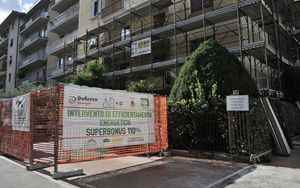(Finance) – In the period from 2021 to the first two months of 2023, the tax credits linked to building bonuses amount to a total of 135 billion euros 75 billion ascertained by Enea for the Superbonus and at least 60 billion Of other incentives (Ecobonus, earthquake, facades, renovations). That’s what she said Court of Auditors during the hearing in the Senate Finance Commission as part of the fact-finding investigation on tax incentive instruments, with particular reference to tax credits.
“This is an indicative but extremely large amount – explained the accounting magistrates – more than double the share of subsidies of the PNRR, which has exhausted the capacity of the companies carrying out the works and has already put pressure on the ‘tax drawers’ of the financial companies who could be the privileged assignees of these tax credits”.
The “huge” resources allocated to energy efficiency with the Superbonus they have so far allowed interventions on less than 400,000 properties, “a significantly reduced share compared to the 57 million real estate units and to about 20 million primary homes existing in our country”. It should also be considered the impact on public accounts. The Superbonus alone, against expenditure estimates of 33 billion, resulting from the technical reports of the latest regulatory interventions, actually resulted in a charge for the tax authorities currently estimated at over 75 billion.
“In the case of such innovative bonuses – said the Court of Auditors – it would certainly have been advisable to introduce limits of allocation, once these had been achieved, an in-depth reflection on the effectiveness of the incentive and, therefore, on the financial sustainability of the measure could have started. Furthermore, the resources committed do not seem to have been sufficiently focused, neither with reference to the fragile subjects who really need the stimulus, nor to the long-term energy efficiency objectives, which will require continuous interventions in the coming years”.
According to the Court, therefore “it is necessary on the one hand to simplify the system and on the other hand, making choices on the areas of use of resources deemed to be priorities, selecting interventions in line with the objectives of general interest in a long-term perspective, and by modulating the intensity of the aid in relation to specific objectives”.
